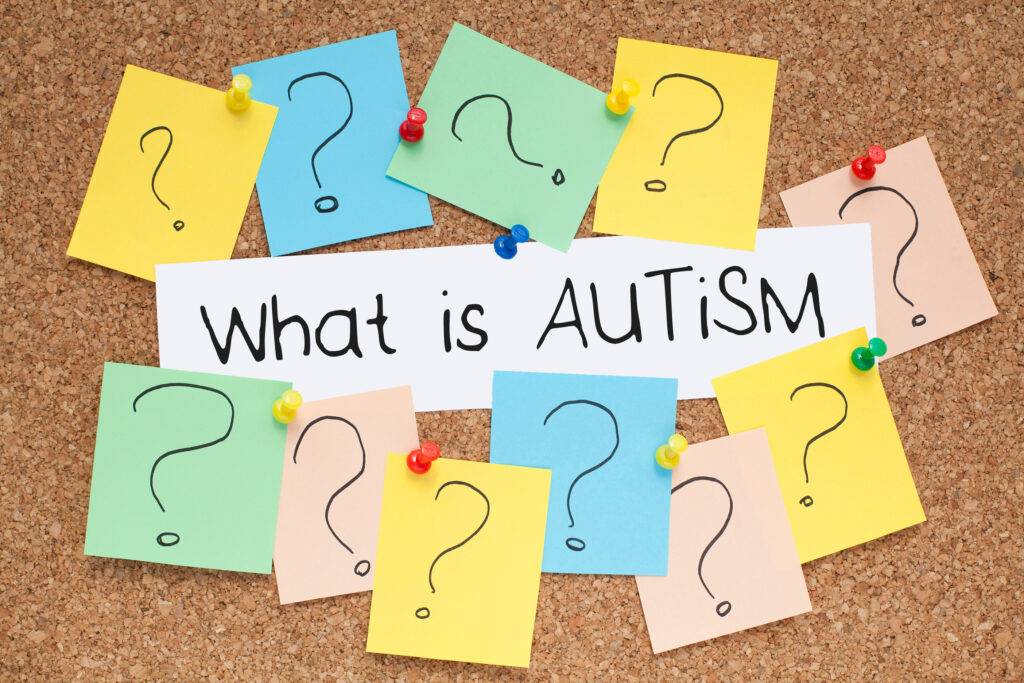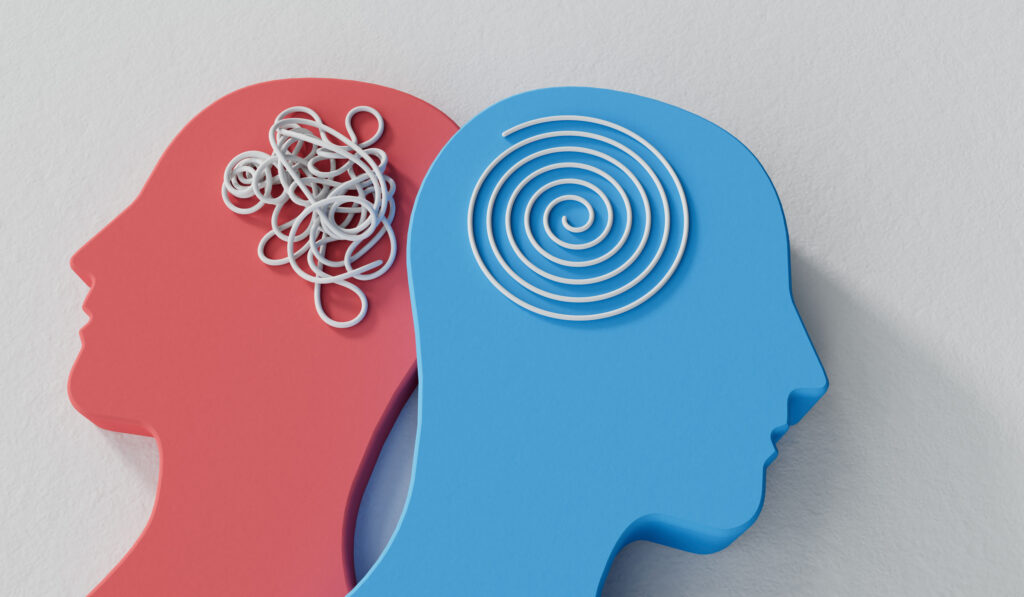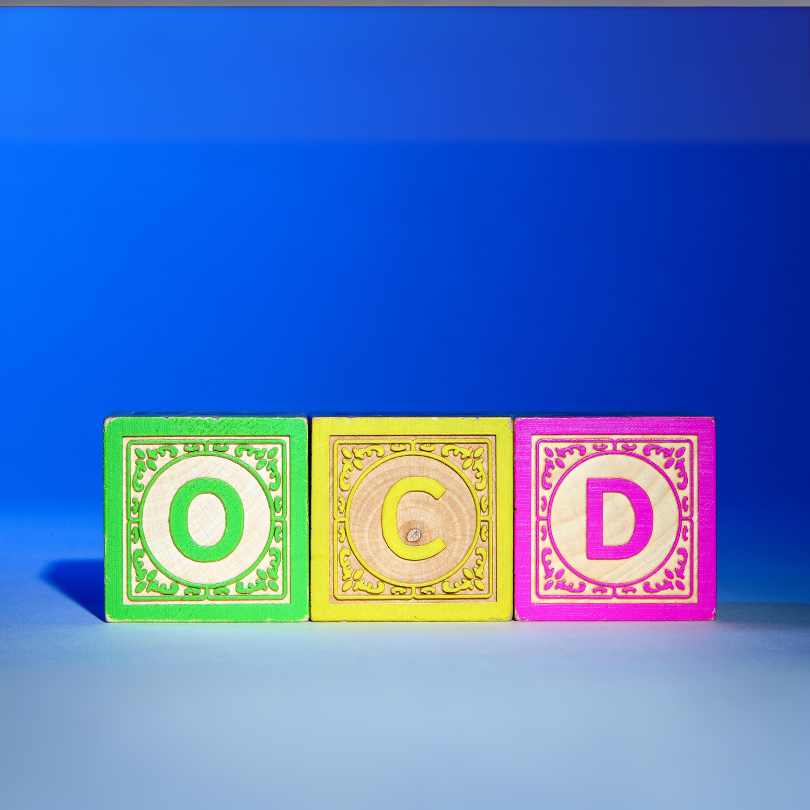Whether you’re experiencing occasional stress or suspect you may be grappling with an anxiety disorder, our assessments are here to guide you in your journey towards greater clarity and support.

Understanding ADHD
ADHD is a neurodevelopmental disorder characterized by persistent patterns of inattention, hyperactivity, and impulsivity that can interfere with daily functioning and social interactions. Individuals with ADHD may struggle with maintaining focus, organizing tasks, and regulating their impulses, leading to challenges in academic, work, and personal settings. While ADHD symptoms can vary in severity and presentation, early identification and intervention are crucial for managing symptoms and improving overall quality of life.
Key Symptoms of ADHD:

Understanding Autism Spectrum Disorder (ASD)
Autism Spectrum Disorder (ASD) is a complex neurodevelopmental condition that impacts social interaction, communication skills, and behavior. Individuals with ASD may experience challenges in understanding and interpreting social cues, forming relationships, and communicating effectively. ASD is characterized by a wide range of symptoms and abilities, leading to the concept of a “spectrum” where each person’s experience with autism is unique. While some individuals with ASD may require significant support in daily functioning, others may exhibit exceptional abilities in specific areas. Early diagnosis and intervention are crucial for providing tailored support and resources to individuals and families affected by ASD.
Key Symptoms of Autism Spectrum Disorder:
The Autism-Spectrum Quotient Test (abbreviated to AQ) is a diagnostic questionnaire designed to measure the expression of Autism-Spectrum traits in an individual, by his or her own subjective self-assessment.

Understanding Complicated Grief
Complicated Grief, also known as Prolonged Grief Disorder or Persistent Complex Bereavement Disorder, is a condition characterized by intense and prolonged symptoms of grief that interfere with daily functioning and well-being. While grief is a natural response to the loss of a loved one, individuals with complicated grief may experience persistent feelings of sadness, yearning, guilt, or anger that do not diminish over time. Complicated grief can significantly impact one’s ability to cope with loss, maintain relationships, and engage in daily activities, leading to emotional distress and impairment in various areas of life. It’s essential for individuals experiencing complicated grief to seek support and professional help to navigate through their grieving process and find ways to cope with their emotions effectively.
Key Symptoms of Complicated Grief:
Take this assessment to further explore if the symptoms you are experiencing are in line with Complicated Grief.

Understanding Depression
Depression, also known as Major Depressive Disorder (MDD), is a common but serious mood disorder characterized by persistent feelings of sadness, hopelessness, and loss of interest or pleasure in activities once enjoyed. Depression can affect how a person thinks, feels, and handles daily activities, often interfering with their ability to function normally. While everyone may feel sad or low from time to time, depression involves more than temporary feelings of sadness and can significantly impact one’s quality of life and overall well-being. It’s important to recognize the signs and symptoms of depression and seek support from mental health professionals to effectively manage and treat the condition.
Key Symptoms of Depression:

Understanding Generalized Anxiety Disorder (GAD)
Generalized Anxiety Disorder (GAD) is a common mental health condition characterized by excessive and uncontrollable worry or anxiety about various aspects of life, such as work, relationships, health, or everyday situations. Individuals with GAD often experience persistent and exaggerated concerns, even when there is little or no reason to worry, leading to significant distress and impairment in daily functioning. GAD can manifest both physically and emotionally, affecting one’s overall well-being and quality of life. Recognizing the symptoms of GAD is crucial for seeking appropriate support and treatment to effectively manage anxiety and regain a sense of control.
Key Symptoms of Generalized Anxiety Disorder:

Understanding Mood Disorders
Mood disorders are a group of mental health conditions characterized by significant disruptions in mood, ranging from extreme highs (mania or hypomania) to profound lows (depression). These disorders affect how individuals feel, think, and behave, impacting various aspects of their lives, including relationships, work, and overall well-being. Mood disorders can vary widely in severity, duration, and presentation, but they often involve persistent and intense emotional experiences that interfere with daily functioning. Recognizing the signs and symptoms of mood disorders is crucial for accurate diagnosis and effective treatment to help individuals regain stability and improve their quality of life.
Key Types and Symptoms of Mood Disorders:
The Mood Disorder Questionnaire (MDQ) is a screening instrument used to assess manic symptoms in adults. Please note, the results of this assessment are not meant to be a diagnosis.

Understanding Obsessive-Compulsive Disorder (OCD)
Obsessive-Compulsive Disorder (OCD) is a chronic mental health condition characterized by intrusive, unwanted thoughts (obsessions) and repetitive behaviors or rituals (compulsions) performed to alleviate anxiety or distress. Individuals with OCD may experience distressing and irrational thoughts or fears that compel them to engage in repetitive behaviors or mental rituals to reduce their anxiety or prevent perceived harm. Despite recognizing that their thoughts and behaviors are excessive or irrational, individuals with OCD find it challenging to control or resist their compulsions. OCD can significantly interfere with daily functioning, relationships, and overall quality of life. Recognizing the symptoms of OCD is crucial for seeking appropriate support and treatment to manage symptoms effectively.
Key Symptoms of Obsessive-Compulsive Disorder:

Understanding Panic Disorder
Panic disorder involves frequent and debilitating anxiety and fear, often without reasonable cause.
Key Symptoms of Panic Disorder:
The Anxiety Sensitivity Index above is a clinical assessment tool that will assist you as well as your provider to determine if you are experiencing “fear of fear” or “anxiety about anxiety”.
Freedom from panic attacks and panic disorder is not only about experiencing decreased “anxiety about anxiety” (otherwise known as anxiety sensitivity). It is also about experiencing decreased frequency and severity of panic attacks and related symptoms, as well as decreased emotional distress and life impairment. The Panic Disorder Severity Scale can assist you and your provider in obtaining an objective assessment regarding the frequency and intensity of your current panic symptoms.

Understanding Parenting Anxiety
Parenting stress and anxiety refers to the emotional strain and exhaustion experienced by individuals in their role as parents. The never ending responsibilities, challenges, and uncertainties associated with raising children can often contribute to heightened stress levels and anxiety for parents. For example, a survey conducted by the American Psychological Association (APA) in 2017 found that 78% of parents reported feeling stressed at least sometimes during the past month.
Key Symptoms of Parenting Anxiety:
Parenting stress and anxiety can manifest in various ways and may vary from person to person. Here are some common symptoms:
If you are experiencing these symptoms, you are not alone but you do deserve support! Managing parenting stress and anxiety often involves self-care practices, setting realistic expectations, and learning new coping strategies so you can stress less and enjoy parenting more.
Completing the Balanced Parenting Scorecard is the initial step outlined in our Overcoming Parental Anxiety workbook. From this starting place you will have a better idea of which components of the parenting experience are leading you to feel burnt out and from there, what action steps you can take to obtain well deserved enhancements in your emotional well being and overall life satisfaction.

Understanding Sleep Related Concerns
Mental health conditions can take many different forms, and it is not always obvious that an individual is experiencing symptoms. As a first step, it can be helpful to screen for and assess common symptoms associated with mental and behavioral health conditions.
Sleep Problems
Quality sleep is essential to physical and mental health. Lack of sleep or too much sleep can be a symptom of and contribute to mental health conditions, including depression, ADHD, and anxiety. Sleep problems can cause difficulties in important areas of a person’s daily functioning. Symptoms of sleep problems can include:
The brief Sleep-Related Impairment assessment below is a screening tool used to evaluate waking alertness, sleepiness, and function. It assesses sleep-related impairment over the past week.

Understanding Social Anxiety
Social Anxiety (social phobia) is characterized by overwhelming worry and excessive self-consciousness in everyday situations.
Key Symptoms of Social Anxiety:

Key Symptoms of Trichotillomania:
The first step in treating Trichotillomania and other Body Focused Repetitive Behaviors (BFRBs) is enhancing your awareness of the nuances of these behaviors, such as the frequency, body sites, and the antecedents of the behaviors (in other words, what are some of the triggers that occur right before engaging in the pulling or picking behavior), as well as the thoughts and negative feelings associated with the BFRB. By obtaining a clearer and less emotionally driven understanding of a BFRB, you can begin to implement effective habit reversal therapy to decrease the frequency of the behavior and intensity of the urge to engage in the BFRB.

Child/adolescent anxiety and related behavioral health conditions can take many different forms. It is not always obvious to the child or the family that one is experiencing anxiety symptoms. As a first step, it can be helpful to take an assessment to obtain an objective picture of current symptoms.
The Screen for Child Anxiety Related Disorders (SCARED) is a self-report instrument used to screen for childhood anxiety disorders including general anxiety disorder, separation anxiety disorder, panic disorder, and social phobia. In addition, it assesses symptoms related to school phobias. There is a child self-report form and a parent form for parents to complete on behalf of their child.
The Pediatric Symptom Checklist-17 (PSC-17) is a psychosocial screen designed to facilitate the recognition of cognitive, emotional, and behavioral problems so that appropriate interventions can be initiated as early as possible.
The My Thoughts about Therapy – Youth (MTT-Y) questionnaire is intended to give providers insight into overall therapy treatment engagement. It asks questions about thoughts and experiences with therapy.
These symptoms may look like other mental health problems. It is best for a child/adolescent to meet with a mental healthcare provider who can rule out other emotional and physical causes of these symptoms and to provide you with a formal diagnosis.

The core symptoms of childhood ADHD (Attention-Deficit/Hyperactivity Disorder) include inattention, hyperactivity, and impulsivity, with these symptoms interfering with a child’s daily functioning in multiple settings, such as school, home, and social environments.
Inattention:
Hyperactivity:
Impulsivity:
It’s important to remember that these symptoms should be present in multiple settings, such as home, school, and social environments, and should significantly impact a child’s functioning and development to meet the criteria for an ADHD diagnosis.

IED is characterized by recurrent behavioral outbursts representing a failure to control aggressive impulses. Children and adolescents with IED have low frustration tolerances and are disproportionately enraged by small annoyances.
Key symptoms of IED:
These symptoms may look like other mental health problems. It is best for child/adolescent to meet with a mental healthcare provider who can rule out other emotional and physical causes of these symptoms and to provide you with a formal diagnosis.

A mood disorder is a broad term used to describe the different types of depression and bipolar disorders, all of which affect mood. These conditions can involve symptoms of moods ranging from extremely low or flat to extremely high or energized. Bipolar disorder is a mood disorder associated with symptoms of mania, which is characterized by periods of abnormally elevated mood, including (but not limited to):
The Child Mania Rating Scale, Parent Version (CMRS-P) is a screening tool intended to be completed by parents and is used to assess manic symptoms in children. Please note, the results of this assessment are not meant to be a diagnosis.

OCD is characterized by frequent, disturbing intrusive thoughts, feelings, ideas, or sensations (obsessions) and accompanying behaviors that one feels compelled to engage in (compulsions). Compulsions can be either external (washing hands) or internal (counting or praying). One engages in compulsions to get rid of obsessive thoughts, but this only provides temporary relief.
Key Symptoms of OCD:
These symptoms may look like other mental health problems. It is best for child/adolescent to meet with a mental healthcare provider who can rule out other emotional and physical causes of these symptoms and to provide you with a formal diagnosis.

All children and adolescents will occasionally disobey, argue with parents and defy authority. Children and teens are more likely experiencing ODD than “normal” striving for independence and autonomy when these oppositional behaviors interfere with learning, school adjustment and disrupt child’s relationships with peers and family members.
Key symptoms of ODD include:
These symptoms may look like other mental health problems. It is best for child/adolescent to meet with a mental healthcare provider who can rule out other emotional and physical causes of these symptoms and to provide you with a formal diagnosis.

Research findings suggest persons with PDD can be placed in one of three very different subgroups:

Quality sleep is essential to physical and mental health. Lack of sleep or too much sleep can be a symptom of and contribute to several different mental health conditions, including depression, ADHD, and anxiety. Sleep problems can cause difficulties in important areas of a person’s daily functioning. Symptoms of sleep problems can include:
The brief Sleep-Related Impairment assessment below is a screening tool used to evaluate waking alertness, sleepiness, and function in children. It assesses sleep-related impairment over the past week.
Have you received a diagnosis in the past but it doesn’t seem right?